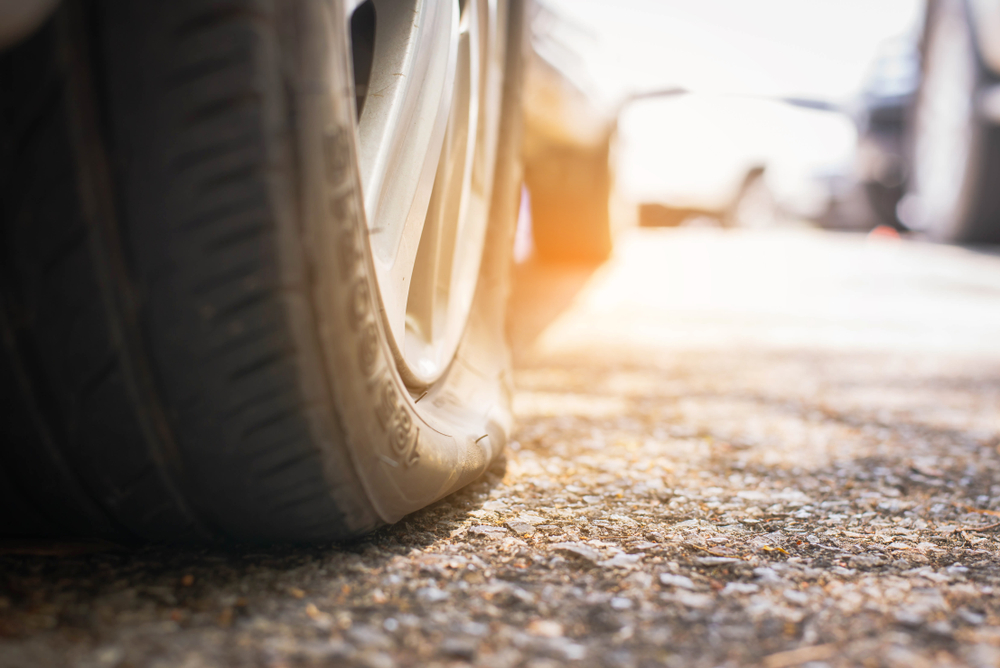Low Temperatures Mean Low Tire Pressure
October 10, 2023 | in Defensive Driving TipsAs things finally start to cool off in Texas, we have some chilly mornings on the horizon. As temperatures dip, it’s important to remember that your tire pressure decreases with colder weather. For cars with built-in TPMS (Tire Pressure Monitoring System) you should see a light come on, however, many older cars don’t have this technology. A quick check of your tire pressures either at home or at the gas station could potentially save you a headache and hundreds of dollars.
This year it’s particularly important to check your tire pressures. If your tires have been filled for an average temperature of 100-degrees, the temperature dropping by 50+ degrees is a meaningful drop. If your car was already on the low end of the suggested range, that drop might be enough to make a difference to the safety of your vehicle.
Why Do Tires Lose Pressure in Cold Weather?
The science behind this phenomenon is pretty straightforward. Remember the ideal gas law from high school physics? It states that the pressure of a gas is directly proportional to its temperature. As the temperature drops, air molecules inside the tire move slower and occupy less space, resulting in reduced pressure. Conversely, as the temperature rises, the molecules move faster, causing the pressure to increase.

Using easy math, for every 10-degree Fahrenheit drop in temperature, a tire will lose about 1% of its pressure. So, if you last checked your tire pressure during a warm summer day at 100°F, and the temperature suddenly plunges to 50°F, you could experience a 5% drop in tire pressure.
Why Is Maintaining the Right Tire Pressure So Important?
Safety: An underinflated tire can impact the vehicle’s handling, making it harder to steer, especially in emergencies. It can also increase the risk of a tire blowout.
Tread Life: Tires with lower-than-recommended pressure wear out faster, particularly on the edges. This means you’ll be replacing your tires sooner than you’d like.
Fuel Efficiency: Underinflated tires have a higher rolling resistance, meaning your engine has to work harder, burning more fuel in the process.
Economic Impact: More frequent tire replacements and reduced fuel efficiency hit your wallet, costing you more in the long run.
Quick Tips:
Check for Free at a Gas Station: Many gas stations have air stations to pump your tires. Using the built-in tire pressure gauge is normally free though. You only pay if you need to pump air.
Morning Routine: Always check tire pressure in the morning, before the car has been driven or after it’s been stationary for a few hours. This gives a more accurate reading as the tires are cold.
Use a Quality Gauge: While many modern vehicles come with tire pressure monitoring systems (TPMS), a good old-fashioned tire gauge can be a handy backup. Invest in a quality gauge, and keep it in your vehicle.
Know Your Numbers: Refer to your vehicle’s owner manual or the sticker inside the driver-side door to find the recommended tire pressure for your vehicle.
Visit a Professional: If you’re unsure about checking tire pressure yourself or feel something’s off with how your car handles, don’t hesitate to consult a professional. They can provide guidance and ensure your tires are in top condition.
Cold weather and tire pressure go hand in hand. As the temperatures start to dip, it’s essential for drivers to understand this relationship, regularly monitor tire pressure, and take appropriate action. Keeping your tires properly inflated not only ensures a smoother drive but also keeps you, your passengers, and others on the road safer. So enjoy the cold weather and remember to give your tires a quick check. It’s a small step that can make a significant difference.
← Why Do Texans Hate Roundabouts? | 2024 Forecast – Lower Car Prices →




